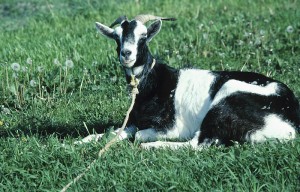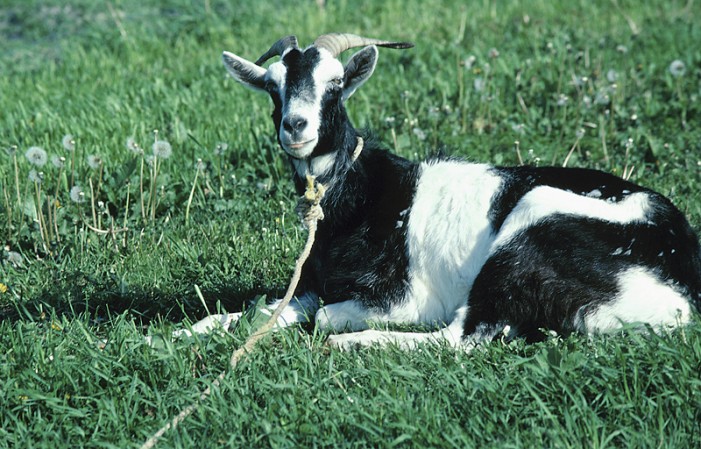 – By Gary Coleman of the Clemson Extension Office –
– By Gary Coleman of the Clemson Extension Office –
Feed is the single largest cost related to raising small ruminants, more often accounting for 63 percent or more of the total production costs. It goes without saying that nutrition utilizes a very large influence on flock reproduction, milk production, and lamb and kid growth.
Late-gestation and lactation are the most precarious periods for ewe and doe nutrition, with lactation placing the highest nutritional demands on ewes/does. Nutrition level largely determines growth rate in lambs and kids. Lambs and kids with higher growth potential have higher nutritional needs, especially with regards to protein. Animals receiving inadequate diets are more prone to disease and will fail to reach their genetic potential.
Small ruminants require energy, protein, vitamins, minerals, fiber, and water. Energy is usually the most limiting nutrient, whereas protein is the most expensive. Deficiencies, excesses, and imbalances of vitamins and minerals can limit animal performance and lead to various health problems. Fiber is necessary to maintain a healthy rumen environment and prevent digestive upsets. Water is the cheapest feed ingredient, yet often the most overlooked.
Many factors affect the nutritional requirements of small ruminants: maintenance, growth, pregnancy, lactation, fiber production, activity, and environment. As a general rule of thumb, sheep and goats will consume 2.5 to 4.5 percent of their body weight on a dry matter basis in feed. The exact percentage varies according to the size of the animal, with smaller animals needing a higher intake to maintain their weight.
A sheep or goat’s nutritional requirements can be met by feeding a mixture of feedstuffs. Feed ingredients can substitute for one another so long as the animals’ nutritional requirements are being met. Small ruminant feeding programs should take into account animal requirements, feed availability, and costs of nutrients.
Pasture, forbs (non woody plants), and browse (woody plants) are usually the key and most economical source of nutrients for sheep and goats, and in some cases, pasture is all small ruminants need to meet their nutritional requirements. Pasture tends to be high in energy and protein when it is in a vegetative state. However, it can have high moisture content, and sometimes it may be difficult for high-producing animals to eat adequate grass to meet their nutrient requirements.
As pasture plants mature, palatability and digestibility decline, thus it is important to rotate pastures to keep plants in a vegetative state. During the early part of the grazing season, browse and forbs tend to be higher in protein and energy than regular pasture. Sheep are excellent weed eaters. Goats are natural browsers and have the unique ability to select plants when they are at their most nutritious state. Sheep and goats that browse have fewer problems with internal parasites.
Hay is the primary source of nutrients for small ruminants during the winter or non-grazing season. Hay varies enormously in quality, and the only way to know the nutritional content is to have the hay analyzed by a forage testing laboratory. Hay tends to be an adequate source of protein and energy for sheep and goats. Legume hays such as alfalfa, clover, and lespedeza tend to be higher in protein, vitamins and minerals, especially calcium, than grass hays. The energy, as well as protein content of hay depends upon the maturity of the forage when it was harvested for forage. Proper curing and storage is also necessary to maintain nutritional quality of the hay.
It is oftentimes crucial to feed concentrates to provide the nutrients that forages alone cannot provide. This is particularly true in the case of high-producing animals. There are also times and situations where concentrates are a more economical source of nutrients. Creep feeding and supplemental feeding of lambs and kids has been shown to increase growth weight, but should only be done to the extent that it increases profit.
Small ruminants require many minerals. The most important are salt, calcium, and phosphorus. The ratio of calcium to phosphorus should be kept around 2:1 to prevent urinary calculi. Vitamins are need in small quantities. Small ruminants require vitamins A, D and E, whereas vitamin K and all the B vitamins are manufactured in the rumen.
Small ruminants should have free access to clean, fresh water at all times. A mature animal will consume between ¾ to 1½ gallons of water per day. Water requirements and intake increase greatly during late gestation and during lactation. Water requirements increase considerably when environmental temperatures rise above 70 degrees (F) and decline with cold environmental temperatures.
For more information on small ruminant’s nutritional needs you can stop by our office at 304 Gray Street or (803) 637 – 3161 or call (864) 554 – 4504 Gary Coleman Area Extension Agent “Livestock and Forages”.

